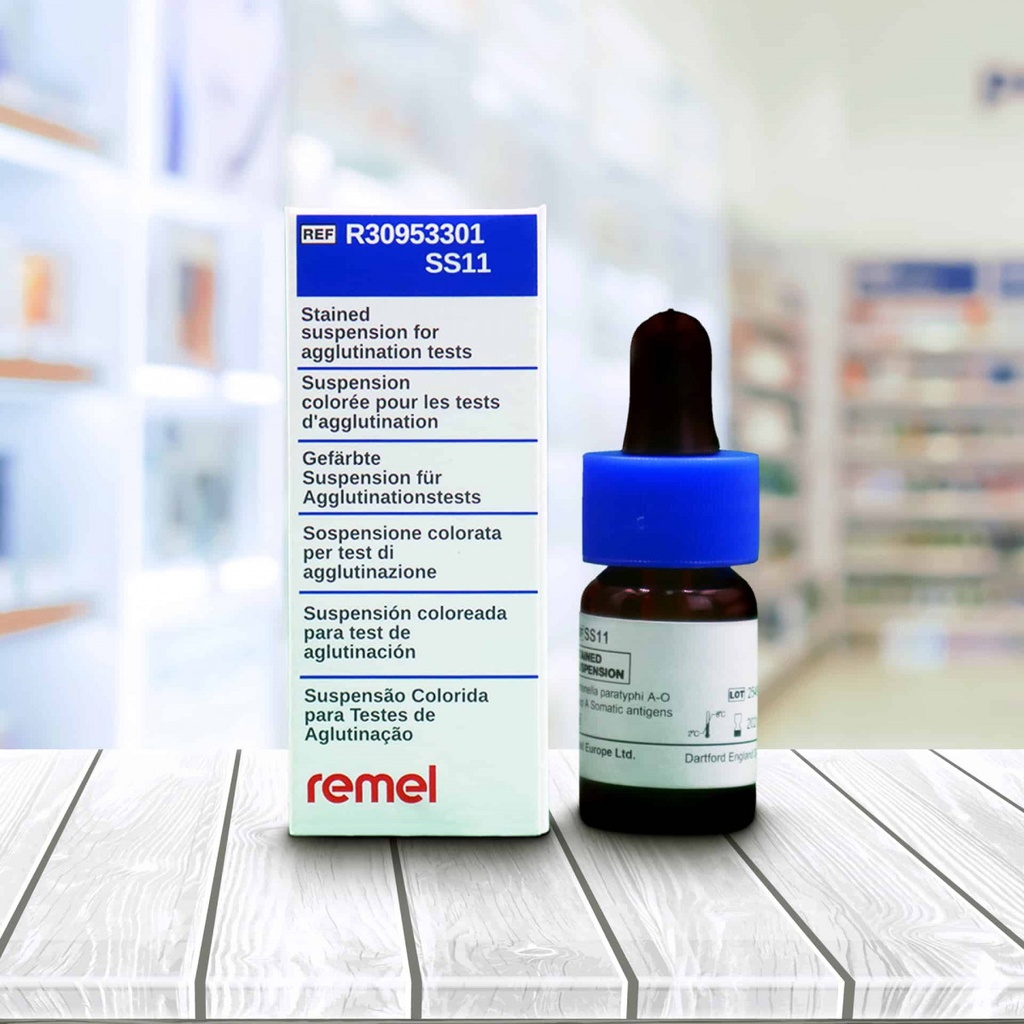Thermo Scientific™ Remel™ Agglutinating Sera, Salmonella O/Vi Polyvalent
Catalog No :
CAS Number :
Brand :
In Stock
Specifications:
| Application | Serology | ||
| Storage Temperature | 2-8°C | ||
| Product Type | Serum | Forms | Liquid |
| Product Brand | Thermo Fisher Scientific™ | ||
The Remel™ Agglutinating Sera, Salmonella O/Vi Polyvalent is a serological tool designed for the identification of somatic (O) and Vi antigens in Salmonella strains. This product is ideal for diagnostic and epidemiological purposes, providing a rapid, reliable method for serotyping Salmonella isolates.
Key Features
- Rapid Results:
- Provides visible agglutination results in 1 minute, enabling quick decision-making.
- Ready-to-Use Reagents:
- Comes as liquid reagents in 2 mL vials, pre-preserved with 0.5% phenol or 0.1% sodium azide for ease of use.
- High Specificity:
- Antisera are absorbed to remove agglutinins for other Salmonella antigens and paracolon α agglutinin, ensuring precise identification.
- Serological Identification:
- Designed for the identification of somatic O/Vi antigens in Salmonella (Groups A-S) using the Kauffmann-White Scheme.
- Versatility:
- Can be used in both slide and tube agglutination tests for flexibility in laboratory workflows.
- Ease of Interpretation:
- Visible agglutination indicates a positive result, simplifying the diagnostic process.
Applications
- Clinical Diagnostics:
- Aids in the identification of Salmonella isolates for patients with suspected bacterial infections.
- Supports diagnostic workflows to inform treatment options.
- Food Safety and Epidemiology:
- Identifies Salmonella spp. in foodborne illness investigations.
- Useful in outbreak tracking and monitoring the distribution of Salmonella serotypes.
- Research:
- Facilitates studies on the classification and serotyping of Salmonella based on O and Vi antigens.
Specifications
| Attribute | Details |
|---|---|
| Detectable Analytes | Salmonella O/Vi Antigen |
| Target Organism Class | Salmonella |
| Type | Agglutinating Sera |
| Material | Polyvalent |
| Packaging Type | 2 mL/Vial |
| Unit Size | Each |
| Preservative Options | 0.5% Phenol or 0.1% Sodium Azide |
| Test Type | Slide or Tube Agglutination |
| Sample Volume | Minimal sample requirement |
| Time to Results | 1 Minute |
| Use Case | Screening and Confirmatory Testing |
Intended Use
- For qualitative slide agglutination screening of Salmonella isolates grown on agar.
- Supports the serological identification of selected Salmonella serotypes.
- Used as part of a diagnostic workflow to aid clinicians in determining treatment options.
Benefits
- Time-Saving:
- Produces rapid results compared to traditional methods, improving laboratory efficiency.
- Accurate and Reliable:
- High specificity for Salmonella antigens, minimizing cross-reactivity.
- Versatile Testing:
- Compatible with slide and tube agglutination methods for various lab settings.
- Cost-Effective:
- Reduces delays in identification, enabling faster decision-making in clinical and industrial applications.
How It Works
- Sample Preparation:
- Grow Salmonella isolates on agar.
- Agglutination Testing:
- Place a small sample on a reaction slide or in a tube.
- Add Remel™ Agglutinating Sera to the sample.
- Result Interpretation:
- Observe visible agglutination within 1 minute:
- Positive: Agglutination indicates the presence of homologous Salmonella antigens.
- Negative: No agglutination indicates absence.
- Observe visible agglutination within 1 minute:
Storage and Handling
- Store at 2°C to 8°C to maintain reagent integrity.
- Ensure reagents are used within their specified shelf life.
The Remel™ Agglutinating Sera, Salmonella O/Vi Polyvalent is an essential tool for laboratories involved in the rapid and reliable serotyping of Salmonella isolates. Its ease of use, speed, and specificity make it a valuable resource for clinical diagnostics, food safety, and research applications.
Relevant Standards and References
- Kauffmann-White Scheme:
- Classifies Salmonella serotypes based on O and H antigens.
- Supporting Literature:
- Edwards, P.R., and Ewing, W.H. (1986). Identification of Enterobacteriaceae.
- Taylor, J. (1967). The isolation and identification of salmonellae.




 0
0
